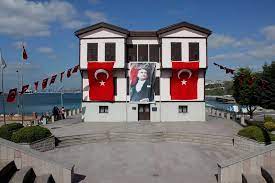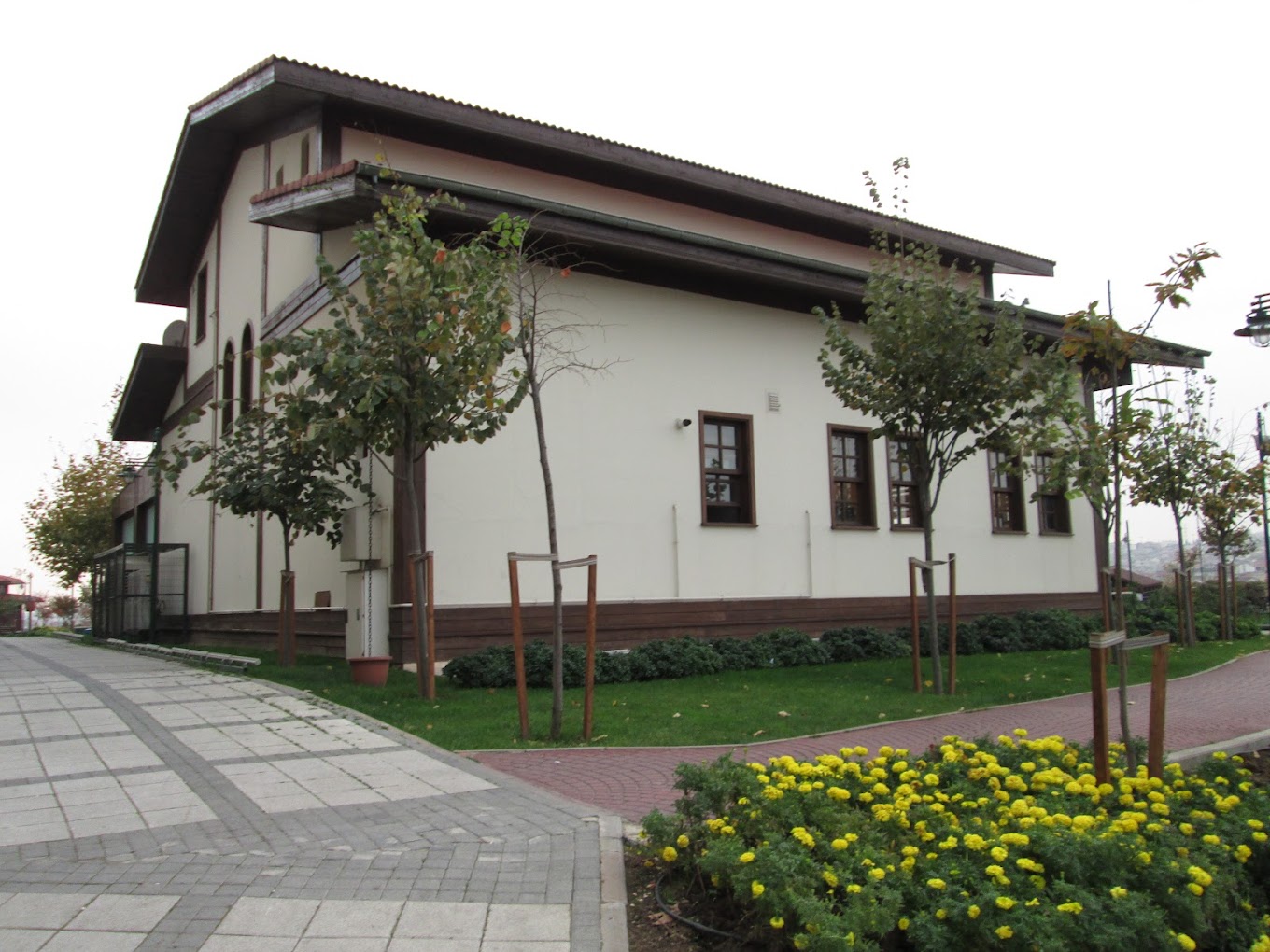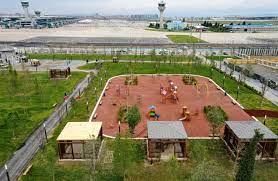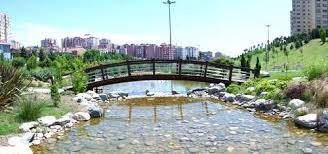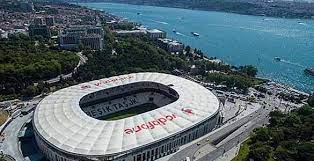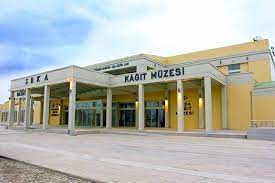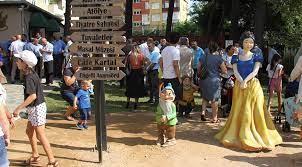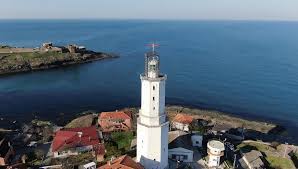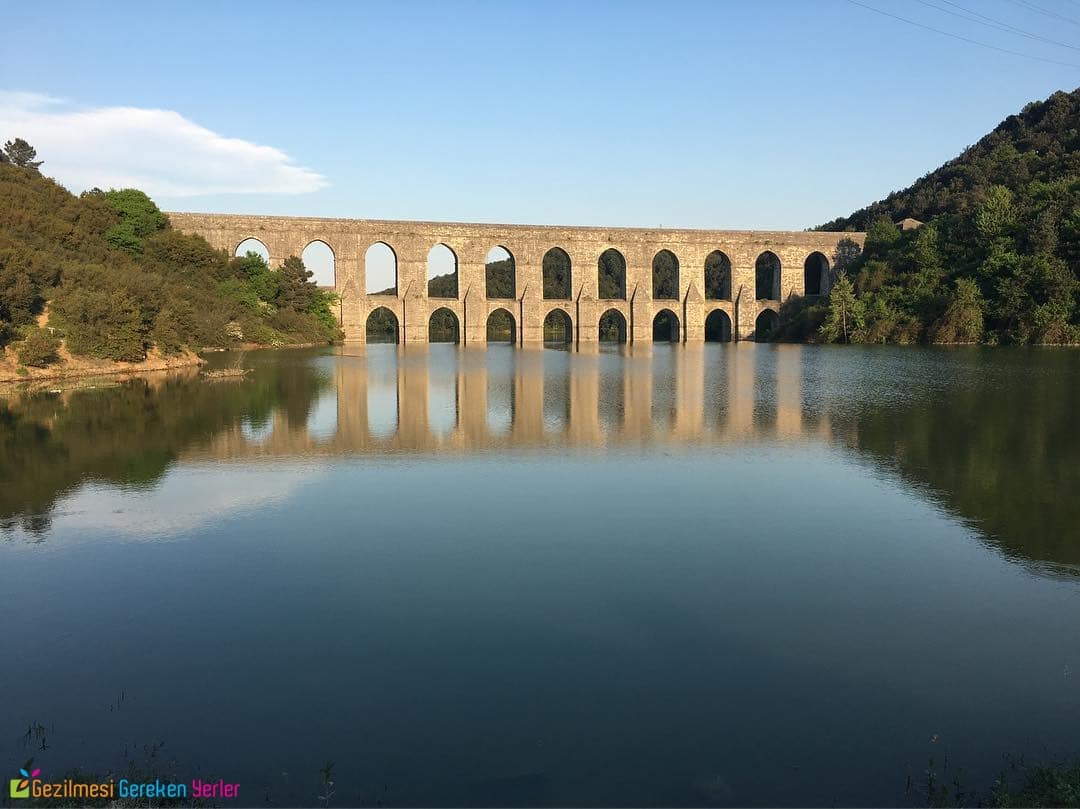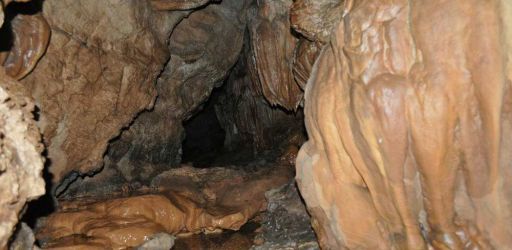Places to Visit in Beyoglu
Places to Visit in Beyoglu
Before writing about the exquisite beauty of Beyoglu, the distinguished district of Istanbul, let's continue our article with the beautiful words of Yavuz Bahadıroglu, a Turkish Poet, Writer and teacher, for Beyoglu.
"Beyoglu is a district of search and discovery. Every corner tells a new story." - Yavuz Bahadıroglu
- Beyoglu
Beyoglu is one of the cosmopolitan districts that make Istanbul Istanbul and smell like Istanbul.
Beyoglu has a very rich and interesting history.
Byzantine and Roman Period: The history of Beyoglu dates back to ancient times.
It is located on the historical peninsula of Istanbul and this area was an important settlement area during the Roman and Byzantine periods.
The district, which was called "Peran en Sykais" in ancient times, was one of the centers of trade and cultural activities during the Byzantine period.
The name of the Beyoglu district seems to originate from the "Peran Vineyards", an area that was not inhabited during the Byzantine period.
The term "Pera" means "opposite side" or "other side" and was used to refer to the opposite side of the Bosphorus.
In later periods, especially foreigners, this region was called "Pera".
There are different rumors about the emergence of the name Beyoglu.
According to one of the rumors, the source of the name is based on the fact that Alexios Komnenos, one of the princes of Pontus, accepted Islam and lived here.
According to other legends, the name is attributed to Luigi Giritti, the son of the Venetian ambassador Andre Giritti.
This man, known as the "Bey Oglu" by the Turks, was born as a result of the ambassador's marriage to a Greek woman.
There is also a rumor that the name "Beyoglu" was used in correspondence with the Venetian ambassador living in the Beyoglu district during the reign of Suleiman the Magnificent.
After the name Pera was removed from official correspondence in 1925, it began to be forgotten and the name Beyoglu became more and more accepted.
The history of Beyoglu has an interesting history, dating from the Byzantine period to the Ottoman Empire.
District Establishment: Beyoglu officially became a district with the Law No. 491, which entered into force on April 20, 1924.
The history of the district is marked by the influence and change of different cultures.
Today, Beyoglu still maintains its importance as one of the important cultural and historical centers of Istanbul.
Places to Visit in Beyoglu
- Taksim Square
Taksim Square is the most active, crowded and energy-inexhaustible square in Istanbul.
Commemoration of Mustafa Kemal Ataturk, the founder of the Republic of Turkey, in the middle of the square It is built for.
It is of great importance both in terms of history and national symbol.
- Taksim Gezi Park
Taksim Gezi Park, Located right next to Taksim Square, this park is one of the most important green areas in the city.
The park is famous for its historic trees dating back to the late 19th century.
- AKM Ataturk Cultural Center
AKM Ataturk Cultural Center: Completed in 1969, this building organizes theater, opera and concert events.
It is an architecturally important building.
- Maxim Gazinos
Maksim Casino: Built in the late 19th century, this building is located in the
It is one of the well-established entertainment venues of Taksim Square.
It was used as a nightclub for a while.
- Taksim Mosque
Taksim Mosque started its construction in 2017 and was opened for worship in 2021.
- Istiklal Street
Beyoglu's brain is Taksim Square, its heart is Istilal Street.
Along Istiklal Street, there are many historical buildings, churches, synagogues, mosques and schools from the Ottoman and Republican periods.
Historical buildings and cultural riches make Istiklal Street an important touristic area.
There is a historical tram line on Istiklal Street.
This tram runs along the street, providing visitors with a nostalgic experience.
Istiklal Street is a pedestrian street closed to traffic.
For this reason, it is ideal for walking, visiting the shops and participating in various activities, there are many restaurants, cafes, bars and nightclubs along the street.
Istiklal Street is famous for its nightlife and has a lively atmosphere until late at night.
- Church of Saint Antoine (Church of St. Antoine)
Saint Antoine' s Church began construction in 1725 and was completed in 1773.
This historical church is one of the oldest Latin Catholic churches in Istanbul.
The church was built in the baroque style and was built in reinforced concrete in the Italian Neogothic style by the architect of the period, Giulio Mongeri.
It measures 20x50 m, is built in the form of a Latin cross and in the Neogothic style.
The walls of the church are covered with mosaics up to a certain height and the exterior walls of the building are made of bricks.
- European passage (Mirrored passage)
In the Great Beyoglu Fire that took place in 1870, this building was burned as well as many other buildings.
After the fire, in 1874, the European Passage was built by Architect Pulgher on the instructions of the Armenian merchant Onnik Düz.
European Passage It is also known as the "Mirrored Passage".
This passage on Istiklal Street has an architecture that reflects the Westernization effects of the period.
The interior of the passage is noteworthy as its ceiling is decorated with mirrors, hence the name "Mirrored Passage".
The architecture of the passage in the European style of the period reflects the richness and elegance of the period.
Avrupa Pasajı contains many shops, restaurants and cafes.
Visitors can shop at shops selling antiques, books, traditional handicraft items, and more.
At the same time, many restaurants and cafes offer delicious food.
The European Passage represents one of the historical and cultural riches of Istanbul.
The passage is an attractive stopping point for visitors while walking or shopping on Istiklal Street.
- Historical Flower Passage
The place of the flower passage in the Ottoman period was the famous Naum Theater.
Sultan Abdulhamid and Sultan Abdulaziz used to come here to watch the theater.
In 1870, during the Great Beyoglu fire, the Naum Theater was burned down and destroyed.
After the fire, the Greek Banker Hristaki Zografos Efendi, known as the "Galata Bankers", bought the land of the Naum Theater, which burned down in 1876, and built a building in accordance with the fashion of the period, which included a bazaar and a site, with the plan drawn by the Italian architect and draftsman Cleanthy Zanno on the land.
At that time, the building had 24 shops and 18 luxury apartments, arranged like modern Parisian buildings.
The passage formed by the shops was named "Hristaki Passage" and the building was named "Cite de Pera".
The shops opened during the reign of Hrista Pasajin were Adjemian's tobacco shop, Maison Parret and Vallaury's patisserie, Japanese store, Natural flower shop, Pandelis' flower shop, Schumacher's bakery, Papadopoulos' jewellery, Keserdjian's tailor shop, Businesses such as Yorgo's tavern and Sideris' fur store were a few of these shops.
In 1908, when the ownership of the building passed to the Grand Vizier Sait Pasha, the passage was named "Sait Pasha Pass".
During the 1940 Armistice years, small shops and flower shops in the passage began to open.
When the site and the passage started to be used as a flower auction place for a while, the florists in Beyoglu and its surroundings gathered in the passage and the name of the passage turned into "Flower Passage".
The atmosphere of the Flower Passage Hristaki Passage - Cite de Pera is still the most ornate building in Beyoglu.
- Hagia Triada Greek Orthodox Church
Hagia Triada Greek Orthodox Church Church is the largest church in Beyoglu Pera.
It was built during the reign of Sultan Abdul Aziz II and Sultan Abdul Hamid II during the Ottoman period and was opened on September 11, 1880.
The church, built by the Greek Community, is known as one of the most magnificent churches of the period.
The church was designed and built according to the drawings of the architect Potesaros.
Its construction lasted 13 years between 1867 and 1880.
It is known for its gothic style, in the form of a domed cross basilica and with two typical bell towers.
It has an impressive beauty with its templon marble and stained glass windows with icons.
Most of the Icons in the church are in the Western Byzantine style.
On March 23, 2003, the church was completely renovated and reopened.
- Historical Atlas Passage
The historical Atlas Passage was designed and built in 1871 as a mansion in 3-storey blocks.
Since 1930, the passage has played an important role in the cultural and entertainment life of Istanbul and Beyoglu.
Entertainment venues such as Mulen Lipstick casino, Atlas Cinema, Küçük Sahne, Kulis Bar have been actively operating in it.
The façade architecture and interior design that developed in the last periods of the Ottoman Empire is one of the characteristic features of the passage.
There are places such as the Historical Atlas Cinema, which was restored between 2018-2020, the Istanbul Cinema Museum, which was opened by the Ministry of Culture and Tourism in 2021, and boutique shops, cafes, restaurants and bars in the arcade section.
- Narmanli Khan
The building, which was built in 1831, was first maintained as the Russian Embassy until 1880 and then as a Russian prison until 1914.
In the following years, it became the property of the Narmanl Family and since the origin of the family was based on Narmali, the place was called Narmanli Dormitory.
In the following years, it was used as a studio and residence, and many writers and artists, especially Aliye Berger, Ahmet Hamdi Tanpinar and Bedri Rahmi Eyuboglu, lived and worked in the historical Han.
Founded by five painters and a sculptor, the exhibition called Group D was opened in 1933 at the Mimosa hatter under Narmanli Han.
The headquarters of Jamanak, one of the important publications of the Armenian Press in Turkey, was located in the Historical Khan for a long time.
There is also a museum in Narmanli Han.
- Istanbul Museum of Illusions
Istanbul Museum of Illusions, If you want to experience unforgettable moments with your family, friends and loved ones, we recommend you to visit the Istanbul Museum of Illusions.
- Madame Tussauds İstanbul
Madame Tussauds Istanbul The cities where Madame Tussauds has branches in 24 cities of the world are as follows; Berlin, Tokyo, Amsterdam, New York, Istanbul, Hong Kong and Sydney.
Madame Tussauds Istanbul Museum, which opened in 2017 on Beyoglu İstiklal Street, is a museum where the wax statues of 60 celebrities in the fields of music, art, politics and sports are exhibited.
Headquartered in London, England, Madame Tussaunds was founded by French Marie Tussauds.
In her first museum, Marie Tussauds exhibited wax sculptures of the severed heads of some people who died in the French Revolution.
- Galata Mevlevi Lodge Museum
Galata Mevlevi Lodge Museum The place, which is not well known in recent history and is known as the Divan Literature Museum, was reopened to visitors on November 21, 2011 with the name of Galata Mevlevi Lodge Museum and its new look with the restoration that took place as of 2007.
Sheikh Galib, one of the important poets of Divan Literature of the 17th century and also the leader of the lodge, has a tomb of "Mehmet Esas Dede" and the complex (Dergâh) where the museum is established
It is one of the important Ottoman works in Beyoglu, together with the "Galata Palace Endurun School", which was built in 1481 and was called Galata Galipdede and Kulekapi Mevlevi Lodge during the Ottoman period.
Galata Mevlevi Lodge is the first Mevlevi Lodge of Istanbul, which was established and built in 1491 by the Sheikh Divane "Semaî" Mehmed "Celebi Dede" of the Afyon Mevlevi Lodge during the period of Bayezid II 1447 – 1512 on the land of Iskender Pasha in Galata.
The Mevlevihane, which was affected by the earthquake of 1509, has become a large and new complex with restoration and renovation works since the beginning of the 17th century.
The first restoration was carried out between 1649 and 1650 by the Shipyard and Matbah Emini İsmail Ağa.
The Mevlevihane, which was affected and damaged by the Tophane fire in 1765, was appointed by Sultan Mustafa III in the same year between 1717 and 1774 by the Sultan Osman Efendi from Yenişehir, and the restoration was carried out in the company of Osman Efendi.
In 1791, the Mevlevihane was renovated as a result of the maintenance/repairs carried out by Sultan Selim III between 1761-1807 with the appointment of Sheikh Galib to the meşihata.
In the 19th century, during the reign of Sultan Mahmud II, between 1784 - 1839, between 1819 and 1835 , during the period of Sultan Abdulmecid 1823 - 1861, with the reconstruction activities between 1851 and 1859, the Mevlevihane took its final shape.
- Galata Tower
Galata Tower is on the opposite shore of the Bosphorus, overlooking the Historical Peninsula of Istanbul.
Galata Tower has played an important role in the city's history and has been used in many different periods.
Some important information about Galata Tower:
Although the exact date of construction of the Galata Tower is not known, it is thought to have been built by the Genoese in the 14th century.
She was first known by the name "Christea Turris".
Throughout history, Galata Tower has been used for different purposes.
It was used as an observation tower, fire watchtower, maritime navigation beacon (lighthouse), and even a prison.
Galata Tower has been damaged over time and has been repaired many times.
Hezarfen Ahmed Celebi was a famous inventor and essayist of the Ottoman Empire who lived in the middle of the 17th century.
Ahmed Celebi lived in Istanbul and he signed a historical event.
According to the story, Hezarfen Ahmed Celebi tried to fly from the Galata Tower by spreading his wings.
This event, which is thought to have taken place in 1632, is considered the first flight attempt in the Islamic world.
Hezarfen Ahmed Celebi has gone down in history as an extraordinary figure and is remembered as an important person interested in aviation during the Ottoman Empire.
He is especially known for his attempt to fly from the Galata Tower.
- Crimean Church / Anglican Church
The Anglican Church, also known as the Crimean Church, is a church belonging to the Anglican denomination and is located on the Crimean Peninsula.
The Anglican Church is part of the Anglican Church of England and follows Anglican beliefs and traditions.
The Anglican Church, located in Crimea, generally serves for the English and other English-speaking communities.
Throughout history, the Anglican Church in Crimea has provided worship services for British and international soldiers, diplomats, businessmen, and tourists.
Especially towards the end of the 19th century, during and after the Crimean War, the church was built and put into operation.
The church was built by architect George Edmund Street in Neo-gothic style and using Maltese stone during construction.
The location of the church is located on Serdar-i Ekrem Street, one of the famous streets of Beyoglu, we recommend you to visit.
- Historical Pera Palace Hotel
Pera Palace Hotel was built in the late 19th century and opened in 1892.
The hotel has earned a reputation as one of the luxury accommodations of its time.
Pera Palace Hotel is considered an important historical and cultural heritage site located in Istanbul.
The hotel has hosted many famous people over time and contributed to the historical and cultural texture of Istanbul.
It is also famous as the place where Agatha Christie wrote the novel "Orient Express" in the early 20th century.
The hotel reflects the luxurious lifestyle of the period with its architecture and interior decoration.
As a historic hotel, it is a popular accommodation option for many tourists who want to experience the rich cultural past and historical atmosphere in Istanbul.
Pera Palace Hotel has undergone several restorations over time and modern amenities have been added, but has taken care to preserve its original historical features.
Some famous people who have stayed at Pera Palace Hotel:
Agatha Christie: The famous British writer Agatha Christie wrote some parts of her novel "Orient Express" at Pera Palace Hotel and stayed at the hotel for a while.
For this reason, the hotel has a room called the "Agatha Christie Room".
Ernest Hemingway: American writer Ernest Hemingway stayed at Pera Palace Hotel and is known for his interest in Istanbul.
Mustafa Kemal Ataturk: Pera Palace Hotel, the founder of Turkey and the 1. He hosted Mustafa Kemal Ataturk, who became the President.
Ataturk stayed at Pera Palace Hotel in 1917.
Greta Garbo: Swedish actress Greta Garbo stayed at Pera Palace Hotel and visited the hotel.
Alfred Hitchcock: The famous British director Alfred Hitchcock also stayed at Pera Palace Hotel.
Mata Hari: Famous dancer and spy Mata Hari is another celebrity who stayed at Pera Palace Hotel.
- Historical Galata Bridge
The historical Galata Bridge connects the historical peninsula with the Galata and Karakoy districts.
Although the full name of the bridge is "Galata Bridge", it is also known locally as "Highways Bridge" or simply "Karakoy Bridge".
The Galata Bridge was built in 1845 and was a wooden bridge at that time.
Then, in 1863, the bridge was rebuilt with iron and steel materials.
The bridge is an important transportation axis of Istanbul and starts right next to the Galata Tower.
This bridge, which crosses the Golden Horn between Karaköy and Eminönü, is used for motor vehicles and trams as well as pedestrians.
Galata Bridge is also famous for fishermen.
Fishermen lined up on the railings on both sides of the bridge, often fishing with fishing rods or similar tools.
This view also creates an interesting image for tourists.
- Neve Salom Synagogue
Neve Shalom Synagogue is a historic place of worship in Istanbul, one of the central synagogues of the Turkish Jewish community.
Located in Istanbul, the Neve Shalom Synagogue is an important religious and cultural center for the Turkish Jewish community.
Neve Shalom Synagogue was started to be built in 1951 and completed in 1951-1952.
It is considered one of the largest synagogues in Istanbul and has a capacity of about 1,200 people.
The synagogue is a center where Istanbul's Jewish community performs their religious worship.
The name of the synagogue means "Island of Peace" and symbolizes peace.
In addition to being a place of important worship for the Turkish Jewish community, Neve Shalom Synagogue is also used for marriages, funerals, and other religious and cultural events.
The Jewish community in Turkey is a community that has existed within Turkish society for centuries and is part of the Turkish cultural and social fabric.
The Neve Shalom Synagogue is a reflection of this long-standing presence and the various cultural events.
The synagogue is an important symbol of Turkish-Jewish relations and forms part of Istanbul's religious and cultural richness.
- Rahmi M. Koç Museum
The Rahmi M. Koç Museum was founded by Turkish businessman Rahmi Koç and is considered one of the most well-known museums in Turkey.
The museum has an extensive collection in industrial history, vehicles, maritime, communications, automotive, and many more.
In the museum, vehicles such as ferries, submarines, locomotives, planes, cars and trams are exhibited in their real dimensions.
The Rahmi M. Koç Museum is located in the Haskoy district of Istanbul and is located in a restored section of Tersane-i Amire, a historic shipyard.
The museum building and its surroundings offer a historic atmosphere and provide visitors with a rich experience in terms of both historical and industrial heritage.
The museum's collection includes industrial machinery, automobiles, vintage technological devices, airplanes, marine equipment, toys, and many other artifacts.
The museum offers visitors intriguing exhibits that tell the story of Turkey's industrial and technological history.
It also offers interactive exhibition spaces and educational programs for children and adults.
- Sp. Pırgic Armenian Catholic Church
Surp Pirgic Armenian Catholic Church is the place where religious worship and ceremonies are held for the Armenian Catholic community.
The full name of the church is "Surp Pirgic Vartanants Church" and it is located in the Beyoglu district of Istanbul, close to Taksim Square.
The construction of this historical church started in 1831 and was completed in 1838.
In addition to providing religious services for the Armenian Catholic community, the church is also a historical building and represents part of Istanbul's cultural richness.
The exterior of the church is built in the neoclassical style and has a prominent dome.
Its interior is full of religious decorations and is used for traditional Armenian Catholic religious rituals.
In addition, the church hosts religious and cultural events of the Armenian Catholic community.
Surp Pirgic Armenian Catholic Church is an important religious center for the Armenian Catholic community living in Istanbul and is also an interesting building in terms of history and architecture.
The church can be open to visitors and can be an interesting place for those who want to explore the religious and cultural history in Istanbul.
- Santa Maria Draperis Chilesesi Meryem Ana Draperis Latin Catholic Chilesesi
Santa Maria Draperis Church, or Virgin Mary Draperis Latin Catholic Church, is an important Latin Catholic church in Istanbul.
The church is located in the Beyoglu district of Istanbul and is located close to Istiklal Street.
The construction of the church began in 1843 and was completed in 1845.
The church was built in the mid 19th century for the Latin Catholic community in Istanbul.
It was designed by an Italian architect and built in the neogothic style.
The interior of the church was also decorated in accordance with the architectural style of the period.
The Church of Santa Maria Draperis is a center for religious worship for the Latin Catholic community in Istanbul.
The church caters to the religious needs of the Italian and Latin Catholic communities, especially in Istanbul.
The church also represents a part of Istanbul's cultural and religious richness.
Interesting from a historical and architectural point of view, this church may be open to visitors and can be a major attraction for those who want to explore the religious and cultural history in Istanbul.
If you have to look at the world once, just look at Istanbul! - Alphonse de Lamartine
French writer, poet and politician Alphonse de Lamartine expressed his love for Istanbul.
From Beyoglu, you can easily reach Istanbul Airport (IST) and Istanbul Sabiha Gokcen Airport (SAW) on time.
Transportation Options: You can easily reach Istanbul Airport (IST) and Sabiha Gokcen Airport (SAW) by using public transportation options, Municipal Buses, Metro and Tram.
Before using these lines, you should check and select the appropriate timetables for your trip on the website.
Air transfer lines: You can reach Istanbul Airport (IST) and Istanbul Sabiha Gokcen Airport (SAW) comfortably and effortlessly with your Airport Transfer reservations made on the Airtransferlines website.
With Airtransferlines, it provides a comfortable, unique Airport Transfer experience with the latest model luxury vehicles.
Click www.airtransferlines.com to take advantage of the advantages of Airtransferlines, to find the right vehicle and driver for you with a wide range of transfer options, to get information about your destination or to make a reservation.
AIRTRANSFERLINES is your personal TRANSPORTATION advisor.
Posts you might like
Are you a professional driver? Become a ATL Driver in your City
Join our driver team and be a part of the global ATL experience. ATL connects you with travelers who need a lift from the airport or port and desire a warm introduction to the city.
SIGNUP NOW!
.jpg?alt=media&token=13da9acd-7e56-46f7-a468-e17016f3de33)


